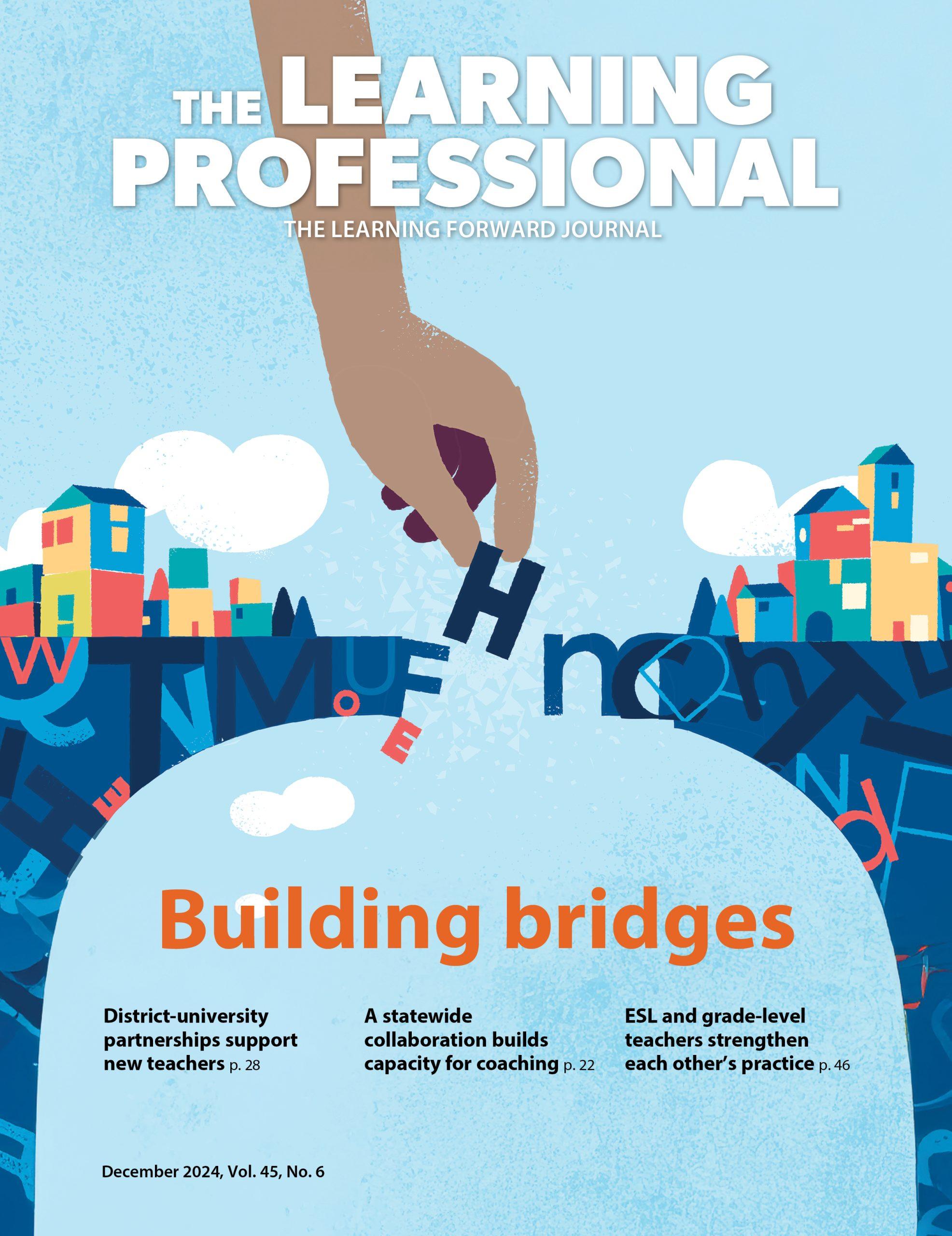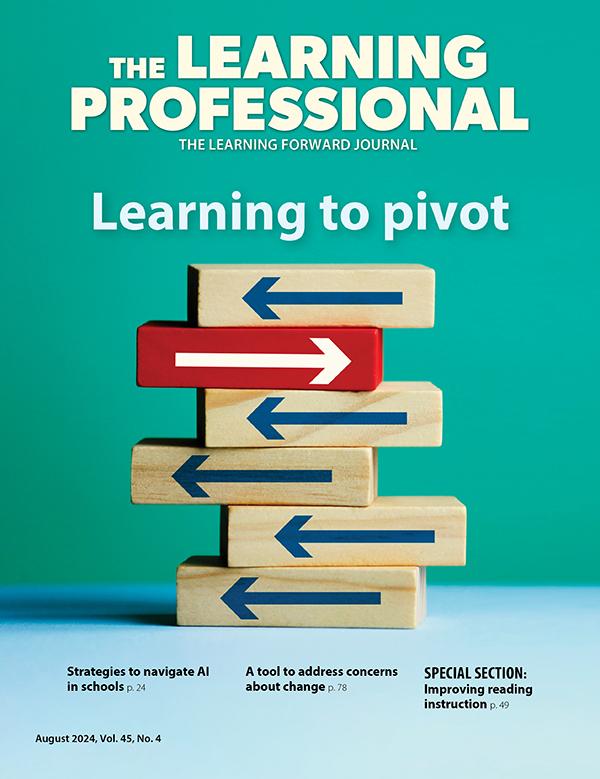LEADERSHIP TEAMS
Communication skills keep teams on track
By Jody Spiro and Lucas Held
Categories: Collaboration, LeadershipJune 2024
Good communication skills are essential for leadership teams to function well and meet their goals. Communication is fundamental to all aspects of teams’ work, including the steps of getting off the ground and establishing early wins, which we have written about in previous columns in this series (Spiro & Fisher, 2024; Spiro & Reyes-Guerra, 2024).
Strong communication skills are especially important today because stress and political polarization are high (National SAM Innovation Project, 2024). These factors can test and undermine relationship skills and therefore compromise team coherence and productivity. Under these circumstances, it can be helpful to reinforce and extend communication skills, even for people who consider themselves to be good communicators. Here are four ways to do that in the context of leadership teams.
Establish agreed-upon ground rules and carry them out.
The best team processes have explicit ground rules from the beginning. These can either be negotiated or proposed by the team leader. Some effective ground rules are that team members should: address the subject at hand rather than digressing to extraneous topics; only contribute comments that are appropriate for the whole team; say nothing personal about any given team member; use data to support arguments when possible; and be constructive and propose solutions rather than criticisms.
The team leader, or a designee, should enforce these ground rules. Eventually they will become part of the team’s culture.
Commit to understanding what team members are saying.
Communication involves not only what you say and how you say it, but also how actively you listen and try to understand what others are saying. Most people are so interested in what they want to say that they ignore how they are heard.
One strategy to foster active listening is to ask good questions — questions that clarify what the other person is saying, rather than challenge or assume what they are going to say. Especially during stressful times, this can help us avoid the tendency to simplify and bear down on our own views.
It is also helpful to understand communications styles. People have different communication styles, and this can be helpful for teams because it provides checks and balances. But it is important to be aware of our own and others’ communication styles because they influence how we each say and hear things.
There are many ways of thinking about communications styles. For example, several frameworks based on the work of Carl Jung (such as Mok, 1975) analyze styles that emphasize generating ideas, applying logic, delving into feelings, or pragmatically getting things done. Some people have a dominant style, while others have various combinations. Of course, a good team needs all perspectives, and these communication styles can be complementary. For example, the idea person often complements the pragmatic person, with one wanting to pursue all available ideas while the other stops at the first viable alternative.
When you are under stress, your style may change. We need to be aware of this. Team members might look like the same people but may act quite differently. The person who normally is kind and considerate of others’ feelings becomes someone who is more concerned with meeting deadlines, for example.
We can use knowledge about our own and others’ communication styles to think about not only what we’re hearing but how others may be hearing us. A good exercise is to think about and fill in this sentence: “When I say X, others hear Y.” For example, if I am trying to communicate to the team the importance of meeting deadlines, I may say, “Let’s complete this task by May 25.” Others may hear, “She is trying to control us.” By recognizing this, the request might be rephrased as a question for group input such as: “What is a realistic deadline for getting this done?” or “Let’s agree on a realistic deadline for getting this done.”
Document discussions to make sure everyone has the same understanding.
We can leave a meeting believing everyone is on the same page when, in fact, everyone walked away with a different message. It is not uncommon for different people to hear the same words or phrases differently, even when it might seem like a simple statement. A famous example of this comes from Brown v. Board of Education, where the Supreme Court used the phrase “all deliberate speed” to eliminate separate but equal schooling. This crucial goal was deterred because some school systems emphasized “speed,” while opponents focused on “deliberate,” and thereby delayed implementation for decades.
One solution is to write down the key points of agreement, such as action steps, during the meeting. Looking at the language together helps people expose disagreements and clarify what they really mean, thus enabling genuine understanding. Another helpful strategy is to send out a summary of decisions after the meeting. Ask team members for comments and revisions, then resend the document with those comments reflected.
Look for common ground while acknowledging differences.
Many of us emphasize team members’ shared perspectives on what is important to address and why. These common values often drive the team forward as they are underlying motivators of members’ behaviors and can be used to spark unity. However, it is equally important to know where team members’ values diverge because conflicts may arise, even when some values are widely held — some members’ values might privilege other values more highly.
Values are motivators of behavior and can be deeply ingrained and not always obvious. Surfacing common values (like collaboration or student achievement) can help bring the team together when differences emerge. Similarly, it is good to know if competition is a widely held value, for example, in which case, such strategies might be effective for this team.
Readers might find useful the values exercise in High-Payoff Strategies (Spiro, 2015, pp. 45-58). This is a brief simulation that will both engage the team and provide data on the individual values of team members. When aggregated, you can see the values of the team — and each member can see where their values are similar to or different from those of the team. Recognizing differences as well as similarities will add to the team’s effective functioning.
Reflection questions
The following questions can help you and your teams think about some of the aspects of communication described here.
To what extent does our team practice active listening using such techniques as: Not interrupting the speaker before they have finished?
- Paraphrasing what the speaker has said so they are sure they have understood correctly?
What are the communications styles of team members?
- Are we honoring and making good use of team members’ different styles?
- How do these styles change under stress?
How can we minimize polarization on the team?
- Are we aware of each other’s values, including where they are similar and where they are different?
- On polarized topics, are we seeking common ground that we can build on?
As the team’s work progresses, things will happen that were not anticipated. It is useful, at all stages, to think through various scenarios, from the different perspectives, of what might result and monitor the work to try to catch and resolve conflict early. It may seem easier to leave these assumptions untested and avoid the conflict in the moment, but not doing so may well result in even more conflict and in the demise of the team’s good work. The four tips in this article may help teams do just that.
References
Mok, P.P. (1975). Communications styles technology. Training Associates Press.
National SAM Innovation Project. (2024, February 29). High conflict: Understanding and navigating a polarized environment [Video]. Samprocess.com. bit.ly/3xYhfeL
Spiro, J. (2015). High-payoff strategies. Jossey-Bass.
Spiro, J. & Fisher, D. (2024, February). Strong teams start with collective vision and early wins. The Learning Professional, 45(1), 14-15.
Spiro, J. & Reyes-Guerra, D. (2024, April). Teams maintain momentum with early wins. The Learning Professional, 45(2), 16-17.
Categories: Collaboration, Leadership
Recent Issues
BUILDING BRIDGES
December 2024
Students benefit when educators bridge the continuum of professional...
CURRICULUM-BASED PROFESSIONAL LEARNING
October 2024
High-quality curriculum requires skilled educators to put it into...
LEARNING TO PIVOT
August 2024
Sometimes new information and situations call for major change. This issue...
GLOBAL PERSPECTIVES
June 2024
What does professional learning look like around the world? This issue...














